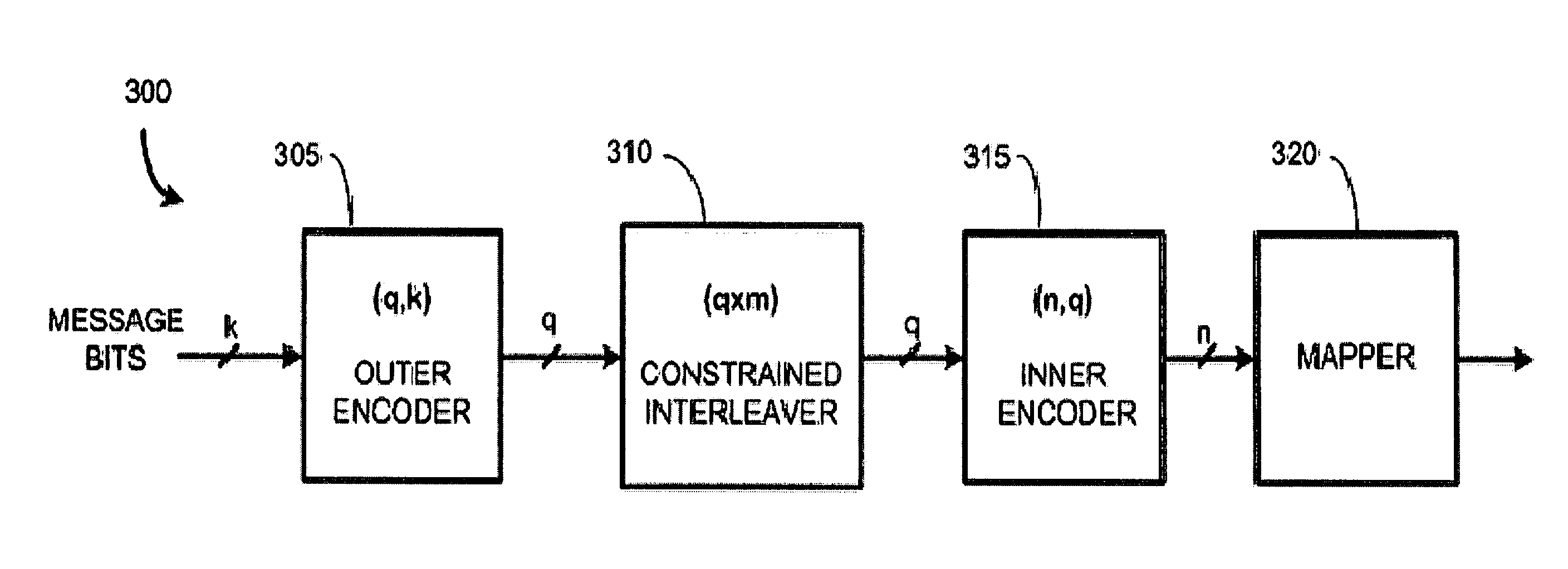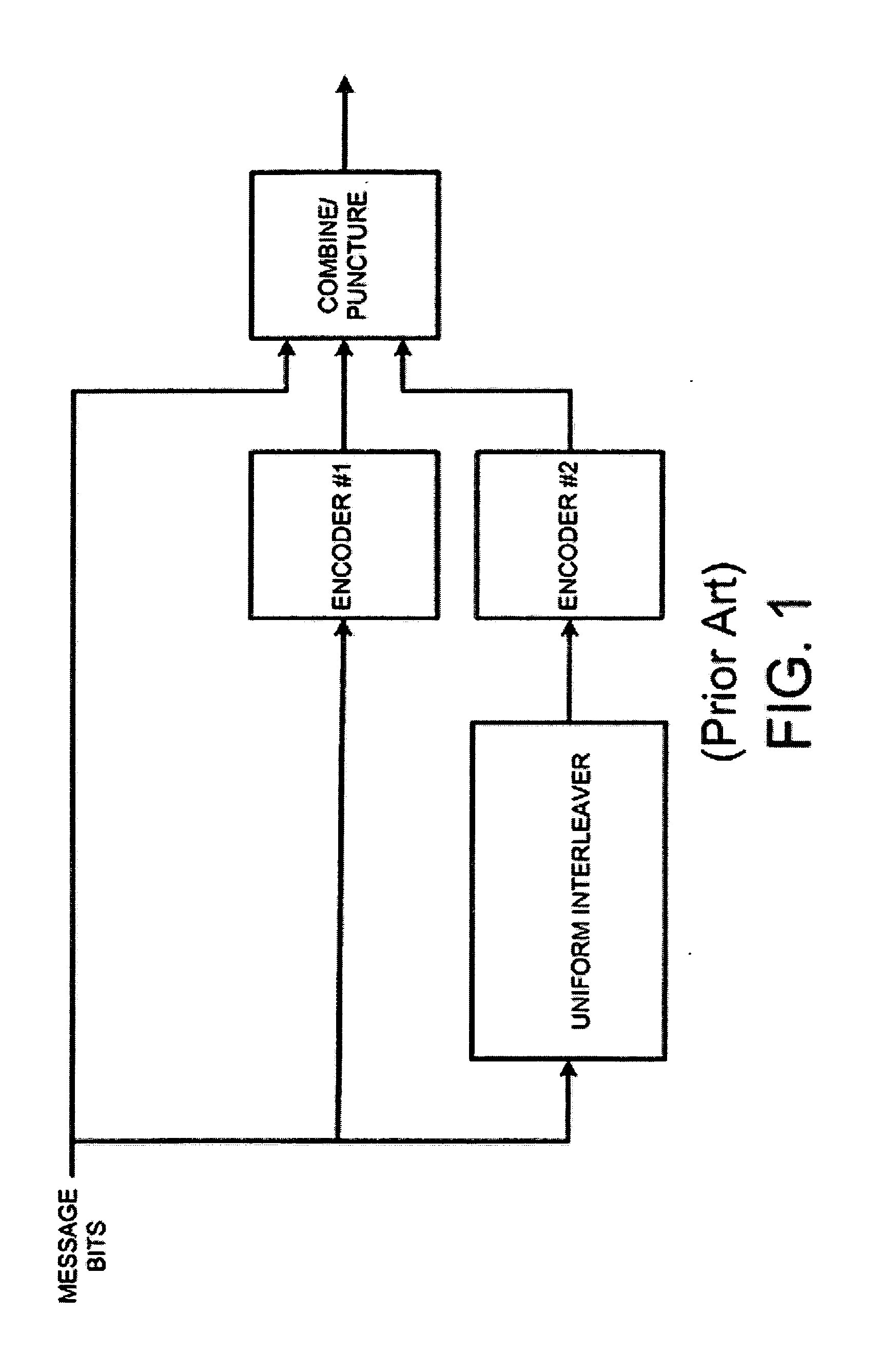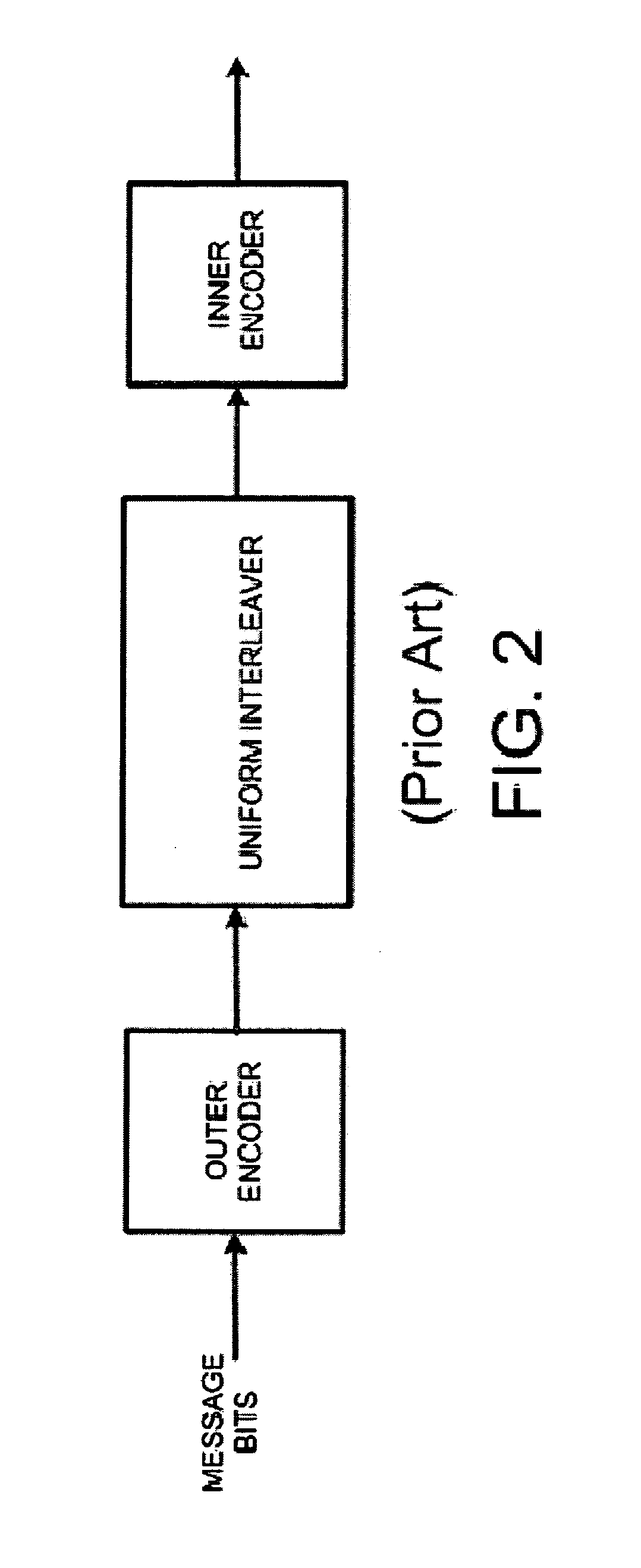Encoding and decoding using constrained interleaving
a technology of constrained interleaving and encoder, which is applied in the direction of coding, code conversion, instruments, etc., can solve the problems of too difficult to handle joint consideration of both the minimum distance and the interleaver design, and achieve the effect of reducing the total number of allowable interleaver combinations, reducing the interleaver gain, and reducing the measur
- Summary
- Abstract
- Description
- Claims
- Application Information
AI Technical Summary
Benefits of technology
Problems solved by technology
Method used
Image
Examples
Embodiment Construction
[0045]In this patent application, various forms of serial concatenation are considered. For example, when two block codes are serially concatenated, this is referred to as SC-BC (serially concatenated block codes). When the inner code is a convolutional code, this is referred to as SCCC (serial concatenation with a convolutional code). The acronym IRCC is also used, and this stands for inner recursive convolutional code. An IRCC is a recursive convolutional code that is used as an inner code in a concatenated encoder. When the inner code is specifically a recursive convolutional code, i.e., when an IRCC is used in a serial concatenated code, this is referred to SC-IRCC (serial concatenation with an inner recursive convolutional code). As it turns out, the constrained interleavers designed for these various types of serially concatenated codes preferably require different sets of constraints to achieve the best performance. Hence the encoder and decoder designs for these various code...
PUM
 Login to View More
Login to View More Abstract
Description
Claims
Application Information
 Login to View More
Login to View More - R&D
- Intellectual Property
- Life Sciences
- Materials
- Tech Scout
- Unparalleled Data Quality
- Higher Quality Content
- 60% Fewer Hallucinations
Browse by: Latest US Patents, China's latest patents, Technical Efficacy Thesaurus, Application Domain, Technology Topic, Popular Technical Reports.
© 2025 PatSnap. All rights reserved.Legal|Privacy policy|Modern Slavery Act Transparency Statement|Sitemap|About US| Contact US: help@patsnap.com



